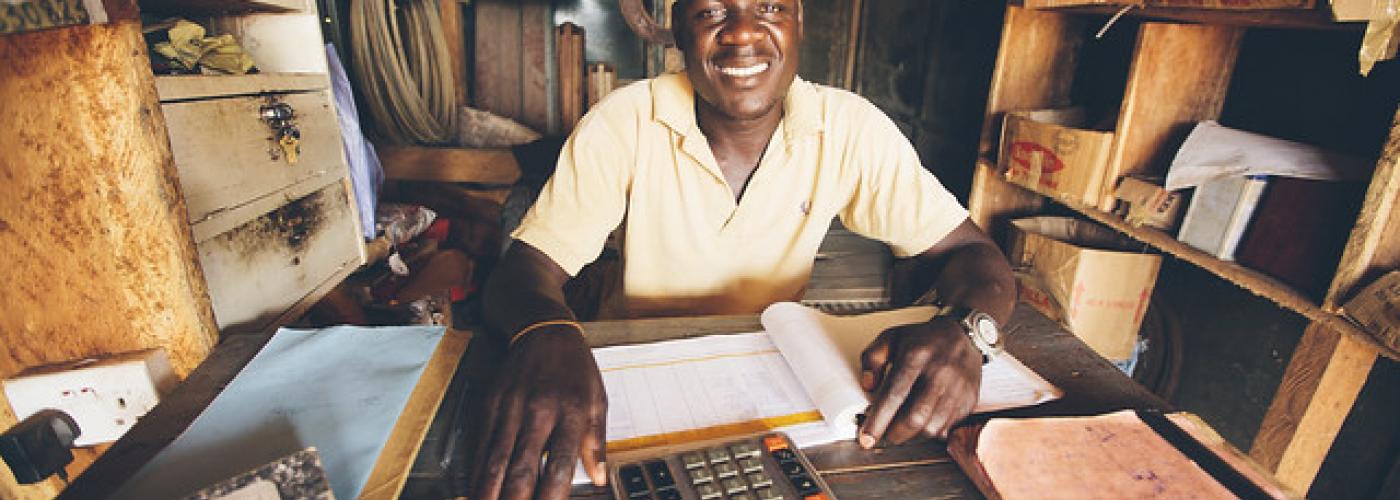Fiscal Space: The Next Frontier?
Image

Most developing countries need more "fiscal space" to finance the investments required to develop and become self-reliant. In this blog post, USAID’s Steve Rozner argues that when it comes to creating fiscal space, it's the size of the pie, not the slice that matters.
The International Monetary Fund (IMF) has been arguing for years that developing countries need to do more to build fiscal space if they are to weather the kinds of shocks that hobbled many economies a decade ago. But what, you might ask, is fiscal space? And how, for that matter, is it created?
Like everything in development, the answers to these questions are nuanced.
ources for a particular purpose – e.g., infrastructure investment or tax relief – without jeopardizing its access to markets or the sustainability of its debt. If you think of the next recession as a burning building, fiscal space is like the water buckets that you've filled in advance to help fight the blaze. For more advanced economies, fiscal space is about the long term: something to build up during upswings in the economy to soften the blow of the inevitable downturns. The government can cut taxes or ramp up spending in order to put out the fire and still maintain solvency.
But for most developing countries, spending needs today are already far in excess of available resources. Even with foreign aid, few have the fiscal space to meet the lumpy and long-term costs of infrastructure construction and maintenance, let alone to smooth expenditures when fires break out. In these countries, the issue of fiscal space arises in the immediate term: the house is already burning, the water buckets are empty, and the well is dry.
With so many pressing needs, there is the temptation in the development community to view fiscal space as static – as a finite pool of resources over which to lay claim, not as something to grow. We urge the government to increase spending in a 'priority' area, while ignoring the implications for the countless other funding priorities they face. The tendency is to favor reprioritization of the budget toward outlays that meet an immediate funding shortfall, while sacrificing those that might yield greater social returns, and further expand the available fiscal space over time. In this zero-sum game, we haven't generated any fiscal space: the pie is still the same size; it's only our slice that's gotten bigger.
This sort of approach is short-sighted, and it overlooks the range of policy options developing countries have to create fiscal space and become increasingly self-reliant. The short-list includes:
- Collecting more. For countries with low ratios of government revenue to Gross Domestic Product (GDP), there is considerable scope to enhance revenues by broadening the tax base and improving tax administration.
- Spending better. Fiscal space can also be created by reducing unproductive expenditures (e.g., fuel subsidies), or by implementing expenditure programs more efficiently (e.g., through service integration).
- Borrowing. Governments can also contract debt, so long as the return on the use to which the borrowing is put justifies the cost. Of course, with an increasing number of developing country governments in debt distress, or at risk of it, borrowing may not be a viable option in all cases.
Whichever combination of policy choices is pursued, the creation of fiscal space should be seen as a dynamic process, not a one-time event. Once generated, it should be used to improve physical and human capital, which in turn will foster stronger growth – creating a virtuous cycle of rising incomes, higher revenues, and even more fiscal space (to fight the fires yet to come).
Still not convinced? A recent IMF working paper estimated that low-income countries (LICs) could increase fiscal space by as much as six percent of GDP over the coming years, provided they are able to sustain recent rates of revenue growth and dedicate additional revenue to high-efficiency public investment. Although generalized, the IMF's simulations confirm that growth-enhancing investment can go a long way toward expanding the available fiscal space, but also that the journey begins with a strong revenue base. For some USAID partner countries, this may require setting more ambitious goals and targets for domestic revenue mobilization (DRM) than currently envisioned.
Want to learn more? Visit USAID’s DRM resource page for a selection of research, case studies, and other useful resources.

